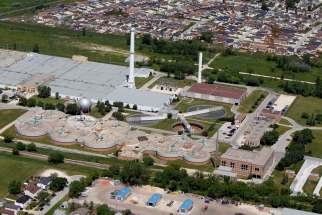Noise deterrents an all-around irritation
Read this article for free:
or
Already have an account? Log in here »
To continue reading, please subscribe:
Monthly Digital Subscription
$0 for the first 4 weeks*
- Enjoy unlimited reading on winnipegfreepress.com
- Read the E-Edition, our digital replica newspaper
- Access News Break, our award-winning app
- Play interactive puzzles
*No charge for 4 weeks then price increases to the regular rate of $19.00 plus GST every four weeks. Offer available to new and qualified returning subscribers only. Cancel any time.
Monthly Digital Subscription
$4.75/week*
- Enjoy unlimited reading on winnipegfreepress.com
- Read the E-Edition, our digital replica newspaper
- Access News Break, our award-winning app
- Play interactive puzzles
*Billed as $19 plus GST every four weeks. Cancel any time.
To continue reading, please subscribe:
Add Free Press access to your Brandon Sun subscription for only an additional
$1 for the first 4 weeks*
*Your next subscription payment will increase by $1.00 and you will be charged $16.99 plus GST for four weeks. After four weeks, your payment will increase to $23.99 plus GST every four weeks.
Read unlimited articles for free today:
or
Already have an account? Log in here »
Hey there, time traveller!
This article was published 30/06/2020 (1990 days ago), so information in it may no longer be current.
As it turns out, the noise deterrents installed under Winnipeg bridges have irritated more than their intended targets. The devices, which emit shrill beeps, were aimed at repelling people who gather under the bridges, but they have also annoyed city councillors who were unaware the instruments were being installed, and irked citizens who think they are an inhumane auditory assault on homeless people who seek shelter under bridges.
The sound-emitting devices were installed in early April at three bridges — Esplanade Riel, Midtown and Maryland — under the authority of Winnipeg public works director Jim Berezowsky. He later said he wasn’t obligated to seek city council’s approval because it was a pilot project that didn’t require extra funding. He added that the noise deterrents are designed to discourage people from gathering because fires under bridges have damaged infrastructure.
When Mr. Berezowsky’s initiative became public knowledge, thanks in large part to the audio in a video posted last week on Twitter, city councillors were displeased on two counts. Coun. Kevin Klein said elected officials should have been informed so they could vote on the project before the noise was switched on. Mayor Brian Bowman and other councillors said they were troubled because it seems a cruel way to treat people who are homeless.
After considerable public pressure, the devices were turned off last Thursday, although they have not been removed.
The noise-deterrent fiasco is the latest misstep by a city hall that seems incapable of dealing effectively with encampments erected by people who are homeless.

Last month, protests broke out as the city dismantled two homeless camps near the Disraeli Freeway. On June 10, protesters surrounded the front doors of the nearby Manitoba Metis Federation, after it threatened to take legal action against the city if encampments were not removed.
It should be clear by now that addressing homelessness requires strategies that are deeper than spending $1,750 apiece for noise deterrents or sending in bulldozers to knock over tents and makeshift shanties.
Advocates for the homeless say the encampments are a consequence of Winnipeg’s lack of social housing, and that bolstering the city’s stock of affordable housing would go a long way toward giving homeless people an alternative to the unhealthy and dangerous scenario of living outdoors.
The return of silence under Winnipeg’s bridges shouldn’t be viewed as a satisfactory resolution.
Suitable and affordable accommodations won’t be built overnight so, in the meantime, it’s incumbent on the city and province to boost the level of respectful outreach that helps people who are homeless. A disproportionate number live with mental illness and drug addictions, and they should be offered the compassionate care of trained professionals rather than stigma and isolation. Help should also include the opportunity for culturally appropriate intervention for the large percentage of homeless people who are Indigenous.
Solutions should start with acknowledging the ineffectiveness of the current methods of rousting people who are homeless with noise deterrents or court orders to vacate public land. They may leave a site if forced, only to set up camp at another location. The problem is not solved, just transferred.
The return of silence under Winnipeg’s bridges shouldn’t be viewed as a satisfactory resolution. Rather, it’s a void that aptly symbolizes the lack of a long-term strategy that is effective and respectful. When it comes to addressing the issue of homelessness, a bit more in the way of sound thinking would be most welcome at city hall.










